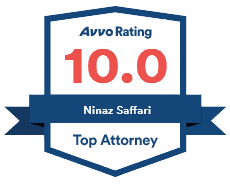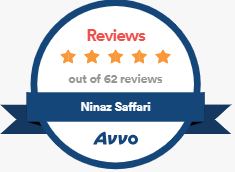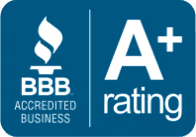Have you been ARRESTED or contacted by the Police, a Detective, FBI, or CPS?
Drug Crimes Defense Attorney
Los Angeles Drug Crimes Lawyer
California ranks as one of the largest and most popular states. However, drug-related crimes are more rampant in Southern California and Los Angeles in particular because the area is among the main entry points of illicit drugs to the west side of the country. The war on drugs is tougher today than ever, making residents easy targets for false accusations and police misconduct during investigations. If you face drug crime charges, turn to Saffari Law Group for reliable legal aid. Let us help ensure a positive result by giving you the best defense.
In 2021, California’s governor Gavin Newson signed Senate Bill 73 to remove mandatory minimums for persons convicted of nonviolent drug crimes. This protects defendants from unduly harsh sentences that are disproportionate to an offense. When the facts of a case allow, we can pursue other alternative sentencing options to increase your odds of staying out of jail.
Drug Crimes Defined
Drug crimes involve the illicit manufacturing, distribution, or use of drugs classified as controlled substances by the state or federal government. A crime can also constitute a combination of several offenses, significantly increasing the punishment imposed.
“Drug crimes” is a broad term, and the facts of a case will dictate the most befitting charges. Some of the most common drug crimes include drug trafficking and the illegal possession or manufacture of a controlled substance. Possession of a controlled substance for personal use is prohibited when you lack a valid prescription.
There are five different “schedules” or classifications of controlled substances. Schedule I drugs are the most dangerous, highly addictive substances with the lowest level of accepted medicinal value.
Some of the controlled substances in each schedule are as follows:
- Schedule I — Ecstasy, heroin, PCP, cocaine base, peyote, and other hallucinogens
- Schedule II — Methamphetamine, amphetamines, opium, and opioids like morphine and Vicodin
- Schedule III — Ketamine, pentobarbital, and certain steroids
- Schedule IV — Tramadol, xanax, diazepam Ambien (zolpidem),
- Schedule V — Phenergan with Codeine, ezogabine, and Robitussin AC
The prosecution considers the facts of a case before deciding the most befitting charges. Some of the aspects considered include:
- The drug’s schedule (schedule I drug attract more severe charges and penalties)
- The quantity of the controlled substance (possession for personal use or sale)
- An offender’s prior offenses
- Other alleged aggravating factors
Because of the complexity of drug laws, charges, and penalties, it is crucial to speak to a skilled criminal defense attorney as soon as you are arrested. The expert will ensure you understand the charges you face and what is at stake. Even though most drug offenses attract misdemeanor charges, aggravating factors can allow the court to prosecute you under federal drug offenses laws and impose a stricter penalty.
Criminal Defense
Menu










Common Drug Crimes in Los Angeles
You can face drug crime charges for violating laws and regulations prohibiting controlled substances’ possession, use, manufacture, or distribution. For instance, while marijuana possession for personal use is not illegal in California, possession of the drug for sale without a license is a crime. Also, it is an offense to drive under the influence of a controlled substance, irrespective of whether you have a valid prescription.
Some of the common drug crimes include:
Possession of a Controlled Substance — Health and Safety Code Section11350
Under Health and Safety Code 11350(a), possessing a controlled substance without a valid prescription is illegal. The prosecution must prove five essential elements beyond a reasonable doubt to convict you of the offense.
These elements include:
- You possessed a drug, narcotic, or its analog that is illegalized by state or federal laws
- You did not have a valid prescription for the drug
- You knew about the presence of the controlled substance
- You know about the drug’s nature as a controlled substance
- You only possessed the illicit drug in a usable amount
“Possession” implies that you had control over a controlled substance and either had it in your direct possession or in an area you can easily access, such as your storage unit, bag, or car. On the other hand, “knowledge” about the presence of a drug implies that you knew that you possessed an illicit substance. The prosecution does not have to prove that you knew about the specific drug in your possession.
The possession of a controlled substance is a misdemeanor punishable by:
- A county jail sentence for a maximum of 1 year
- A fine not exceeding $1,000, or
- Drug diversion program under Penal Code 1000
Possession for Sale of a Controlled Substance — Health and Safety Code Section 11351
Under Health and Safety Code 11351, possessing a controlled substance and intending to sell it is a crime. Health and Safety Code Section 11351 differs from Code Section 11350 in terms of the possessor’s intent. Unless a defendant voluntarily confesses to an offense, the prosecution must depend on circumstantial evidence to establish the plan to use or sell.
Some of the factors that imply intent to sell are:
- Large quantities of a controlled drug or narcotic
- Scales and packaging baggies
- A lot of money in small denominations
- Heavy traffic from people who enter a spot and leave shortly after
The crucial elements the prosecution must prove beyond a reasonable doubt to convict you of possession of a controlled substance for sale include:
- You possessed a drug, narcotic, or its analog that is illegalized by state or federal laws
- You knew about the presence of the controlled substance
- You know about the drug’s nature as a controlled substance
- You intended to sell the illicit drug or possessed amounts enough to sell/ distribute
Violating Health and Safety Code 11351 is a felony. When a defendant engages in multiple sales of controlled substances, the court will impose a penalty for each offense count. A conviction attracts the following sentence:
- Imprisonment for one year in county jail, or
- 2 to 20 years incarceration if there are aggravating factors
- A maximum fine of $20,000, or
- A fine of up to $8,000,000 (if aggravating factors exist)
Sale or Transportation of a Controlled Substance — Health and Safety Code Section 11352
Health and Safety Code 11352 makes it a crime to sell, transport, administer, import, or furnish a controlled substance. Some of the street drugs prohibited in the statute include cocaine and heroin, as well as common prescription drugs like codeine and hydrocodone. Among the drugs exempt from HS 11352 are methamphetamine and marijuana.
You can be convicted for sale or transportation of a controlled substance if you engage in any of the following acts:
- Sell a controlled substance
- Furnish it
- Administer an illicit drug to another person
- Transport it for sale or import it into the state
- Give it away
- Volunteer to sell, transport, furnish, import, administer, or give away a controlled substance
The prosecution will need to prove the following elements beyond a reasonable doubt to convict you under HS 11352:
- You sold, transported, imported, furnished, administered, or gave away a controlled substance
- You knew about the drug’s presence
- You knew of the drug’s nature as a controlled substance
- You possessed a controlled substance with the intent to sell it
In 2014, the legislative amendments made transporting a controlled substance a crime under Section 11352 only when a drug is moved with the intent to sell. Before that, you could face felony charges under the statute for merely moving a drug, irrespective of the distance covered or the means of transportation used.
The penalty for violating HS Section 11352 highly depends on the facts of a case and the criminal history of a defendant. Penalties for the first offense include:
- Formal probation, or
- Imprisonment for 2, 4, or 5 years in county jail, or
- 3, 6, or 9 years’ incarceration (if you transport drugs across multiple county lines)
- A fine not exceeding $20,000
The above is merely the basic penalty for selling or transporting a controlled substance. If aggravating factors exist, the court can impose sentence enhancements and extend jail time up to 25 years.
Possession of Drug Paraphernalia — Health and Safety Code 11364
Health & Safety Code 11364 prohibits the possession of drug paraphernalia. These are instruments or devices used to consume a controlled substance unlawfully. Some typical paraphernalia used to smoke, inject or consume illicit drugs include opium pipes, miniature cocaine spoons, syringes, and hypodermic needles.
There are three vital elements the prosecution must prove beyond a reasonable doubt:
- You possessed or had control over drug paraphernalia
- You know about the paraphernalia’s presence
- You knew that what you had was drug paraphernalia
Violating HS 11364 is a misdemeanor, and a conviction attracts the following punishment:
- Incarceration for up to 6 months in county jail
- A fine not exceeding $1,000
Transportation of Marijuana — Health and Safety Code Section 11360
Possession of marijuana for recreational use is not illegal in California. However, the sale of the drug is still regulated within the state, and you must have a license to sell marijuana legally. Health and Safety Code 11360 makes it illegal to sell, give away, transport, or import any amount of marijuana or hashish (concentrated cannabis) without a valid state license.
The elements of the offense are as follows:
- You sold, furnished, transported, imported, administered, or gave away a usable quantity of marijuana
- You lacked a valid license to distribute the drug
- You knew about the drug’s presence and nature
Violating HS 11360 is a wobbler offense charged as a misdemeanor or a felony, depending on the facts of the case. A misdemeanor conviction is punishable by:
- A county jail sentence for up to 6 months
- A $500 maximum fine
A felony conviction for the unlicensed sale or transportation of marijuana attracts the following penalty:
- A county jail sentence for 2, 3, or 4 years
Manufacturing a Controlled Substance — Health and Safety Code 11379.6
Under Health and Safety Code 11379.6, it is an offense to manufacture a controlled substance. The prosecution can prove a case by establishing two essential elements:
- You manufactured, produced, prepared, or compounded an illicit drug
- You know the nature of the drug is a narcotic
If convicted for violating HS 11379.6, the punishment to expect includes:
- A state prison sentence for 3, 5, or 7 years
- A fine of up to 50,000
Operating or Maintaining a Drug House — Health and Safety Code 11366
Health and Safety Code 11366 criminalizes operating or maintaining a drug house. The premise is any place where people unlawfully use, sell, or give away controlled substances. Often, an HS 11366 violation will also tag along with other drug crimes like possession for sale under HS 11351, possession of a controlled substance under HS 11350(a), or the sale or transportation of a controlled substance under HS11352.
The elements of the offense are as follows:
- You operated or maintained a place
- You intended to give away, sell or allow people to use controlled substances within the premise.
A drug house can be any structure like an apartment, house, motel, or hotel room. On the other hand, to “operate or maintain” a drug house implies that you continually give away or sell controlled substances within the structure.
Health and Safety Code 11366 is a wobbler offense, and the facts of a case will determine whether the prosecution will impose felony or misdemeanor charges. The punishment for a misdemeanor conviction includes the following:
- Up to 1-year imprisonment in county jail
- A $1,000 maximum fine
A felony conviction for operating or maintaining a drug house includes:
- Jail time in state prison for up to 3 years
- A fine not exceeding $10,000
Under the Influence of a Controlled Substance — Health and Safety Code Section 11550
Another common drug crime is being under the influence of a controlled substance without a valid prescription. The offense is a misdemeanor, and a defendant can benefit from alternative sentencing under Penal Code 1000 or Proposition 36 if the crime is not violent.
The prosecution must table evidence to show that you were under the influence of a drug or narcotic illegalized by state or federal laws. Evidence can be obtained through chemical test results or the testimony of the arresting officer or a DRE (Drug Recognition Expert). Moreover, the prosecutor must prove two crucial elements beyond a reasonable doubt.
These elements include:
- You willfully used a controlled substance or narcotic
- You were willfully under the influence of this substance
Being under the influence of a controlled substance is a misdemeanor. The offense is punishable by:
- County jail time for up to 1 year
If you face charges for violating Health and Safety Code Section 11550, it is imperative to seek the legal aid of a competent criminal defense attorney. The expert will analyze the facts of your case and inform you if you are eligible for a drug diversion program. A drug diversion program allows non-violent drug offenders to benefit from counseling and drug rehabilitation and have all charges dropped upon successful completion of probation.
Forging or Altering a Prescription — Health and Safety Code Section 11368
Health and Safety Code 11368 prohibits forging or altering a narcotic drug’s prescription. It is also an offense to obtain or attempt to obtain a controlled narcotic using a forged or altered prescription. You can also face charges for possessing controlled substances obtained using a falsified prescription.
Health and Safety Code 11027 describes a “prescription” as an order for a controlled substance given verbally, in writing, or through an electronic transmission by a prescriber directly to a patient. The offense can carry a harsh penalty, especially when the drug is more dangerous and poses a higher risk of addiction.
The elements the prosecution must prove to convict you under Health and Safety Code 11368 include the following:
- You altered or forged a prescription, or
- You gave someone a forged or altered prescription, or
- You used or tried to use a forged or altered prescription to obtain a narcotic drug
If you are arrested for presenting a falsified prescription for a narcotic given to you by someone else, you can still be convicted under HS 11368 if you knew it was forged. Either way, the offense is a wobbler, and the prosecution will consider the facts of a case and your criminal history before deciding whether to impose felony or misdemeanor charges.
A misdemeanor conviction attracts the following penalty:
- Imprisonment in county jail for up to 1 year
- A fine of $1,000 maximum
If charged as a felony, forging or altering a prescription is punishable by:
- 16 months, 2 or 3 years in state prison
- A fine not exceeding $10,000
Find a Drug Crime Attorney
Drug crime convictions attract tough penalties that can put your freedom and future at stake. Whether you face charges for a non-violent offense or a serious felony, the right defense team can make all the difference in the outcome of a case. The Los Angeles Defense Attorney Law Firm understands California drug laws in-depth and can give you the best winning chances, irrespective of the charges you face.
We can also persuade the court to consider drug diversion under Proposition 36, Penal Code 1000, or California drug court instead of a jail sentence. Our proven track record in achieving desirable outcomes will give you peace of mind when preparing for your case. Call us today at 213-460-4922 for a free and confidential initial consultation.